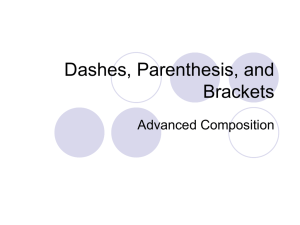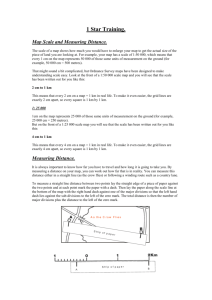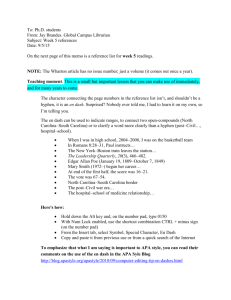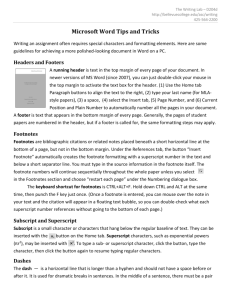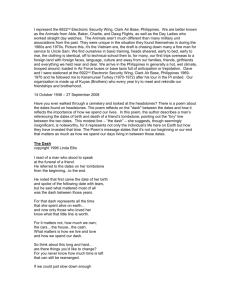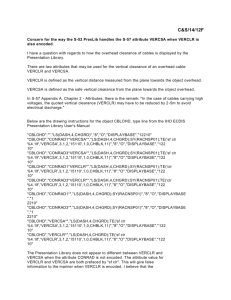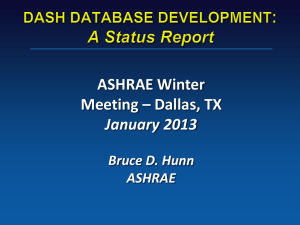to view the presentation by Dr. Dash
advertisement
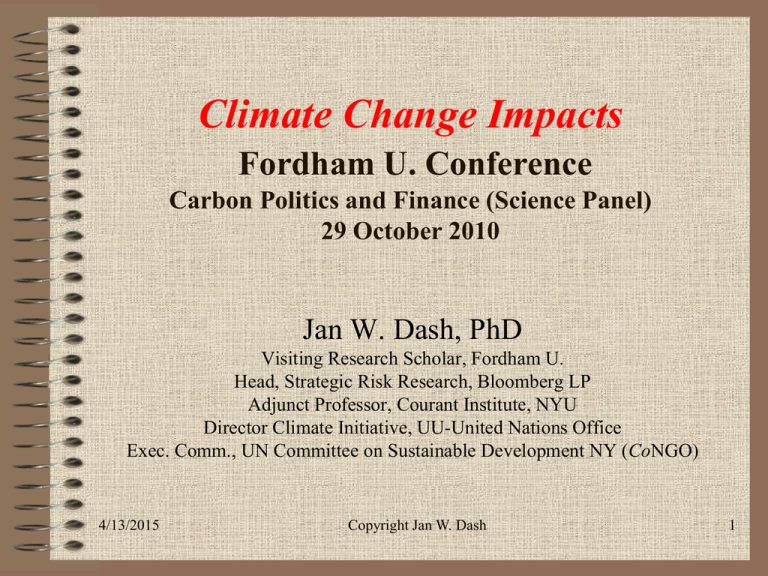
Climate Change Impacts Fordham U. Conference Carbon Politics and Finance (Science Panel) 29 October 2010 Jan W. Dash, PhD Visiting Research Scholar, Fordham U. Head, Strategic Risk Research, Bloomberg LP Adjunct Professor, Courant Institute, NYU Director Climate Initiative, UU-United Nations Office Exec. Comm., UN Committee on Sustainable Development NY (CoNGO) . 4/13/2015 Copyright Jan W. Dash 1 Talk Outline • • • • Summary of Climate Change CC impacts The Millennium Development Goals Case study: Future crop yield loss (US) Bottom Line 4/13/2015 Copyright Jan W. Dash 2 Summary: Impacts of CC • We are starting to see bad impacts NOW – Impacts will get FAR WORSE if we do not act • Developing countries will be hit hardest – No Safe Haven: U.S. will be hit very hard. • National and international security threat, economic / investment disruption … • Increases in: water shortages, crop failures, fires, droughts, disease, flooding, military conflict, species extermination, extreme weather, sea level rise, heat waves, acidified oceans, migrations… • Ref: IPCC Report Volume II, 2007 + Pentagon + … 4/13/2015 Copyright Jan W. Dash 3 Millennium Development Goals • MDGs apply to poorest countries (2015) – All 192 countries (incl. US) signed – – – – – – – – 4/13/2015 Goal 1: Eradicate Extreme Poverty and Hunger Goal 2: Achieve universal primary education Goal 3: Promote gender equality and empower women Goal 4: Reduce Child Mortality Rate Goal 5: Improve maternal health Goal 6: Combat HIV/AIDS, malaria, and other diseases Goal 7: Ensure environmental sustainability Goal 8: Develop a global partnership for development Copyright Jan W. Dash 4 CC Impacts = Threat to MDGs • Direct Impacts: – Health (increased disease), crops (yields down), women and children (most vulnerable), environment (drought, floods, fires …) • Indirect Impacts example: – Conflict between ethanol and food (true/perceived) • N.B. Advanced biofuels (switch grass, poplar trees, algae on non-agricultural land) won’t have same problem 4/13/2015 Copyright Jan W. Dash 5 Science and Impacts • Regional climate model studies => CC impact forecasts, useful for: – Mitigation decision input – Adaptation decision input 4/13/2015 Copyright Jan W. Dash 6 Warming Climate May Devastate Major U.S. Crops • Three of the most important crops produced in the United States—corn, soybeans and cotton—are predicted to suffer declines of as much as 80 percent if temperatures continue to rise with manmade climate change • Warming can be above threshold to damage/kill plants • Schlenker and Roberts, Columbia & NC State U, Proc. Nat. Acad. Sciences 4/13/2015 Copyright Jan W. Dash 7 Future Crop Yields depend strongly on temperature • Data (US, 1950-2005) => Nonlinear T response – Yields increase with small T increase BUT – If: T too high > 29oC for corn, 30oC for soybeans, and 32oC for cotton => “Very harmful”. • Climate Model used, with scenarios, forecasts T – Future T = f(emissions) = g(human behavior) • Combine data + models => forecast crop yields • Conclusion: Business as usual => US crops hit very hard 4/13/2015 Copyright Jan W. Dash 8 Bottom Line • Climate change negatively impacts – – – – Developing countries (e.g. MDGs) U.S. (no safe haven) Investment, economics, politics, national security … Lives of people • Need Mitigation and Adaptation action – Really just Risk Management – Cheaper and more humane to act now – Ethical / moral aspects (later in this Conference): • Social climate justice + • Future generational equity (grandchildren) • Lots of positive business opportunities 4/13/2015 Copyright Jan W. Dash 9 Moral, Ethical Aspects to ACT UN Committee Sustainable Development (CoNGO, NY) Statement (Copenhagen, Cancun) • We have a moral and ethical imperative to learn about climate change / global warming, and to act appropriately and decisively. This imperative derives from all people living today on the planet and those who will follow us. We cannot have succeeding generations say: "They refused to learn" or "they knew but did not act." 4/13/2015 Copyright Jan W. Dash 10
